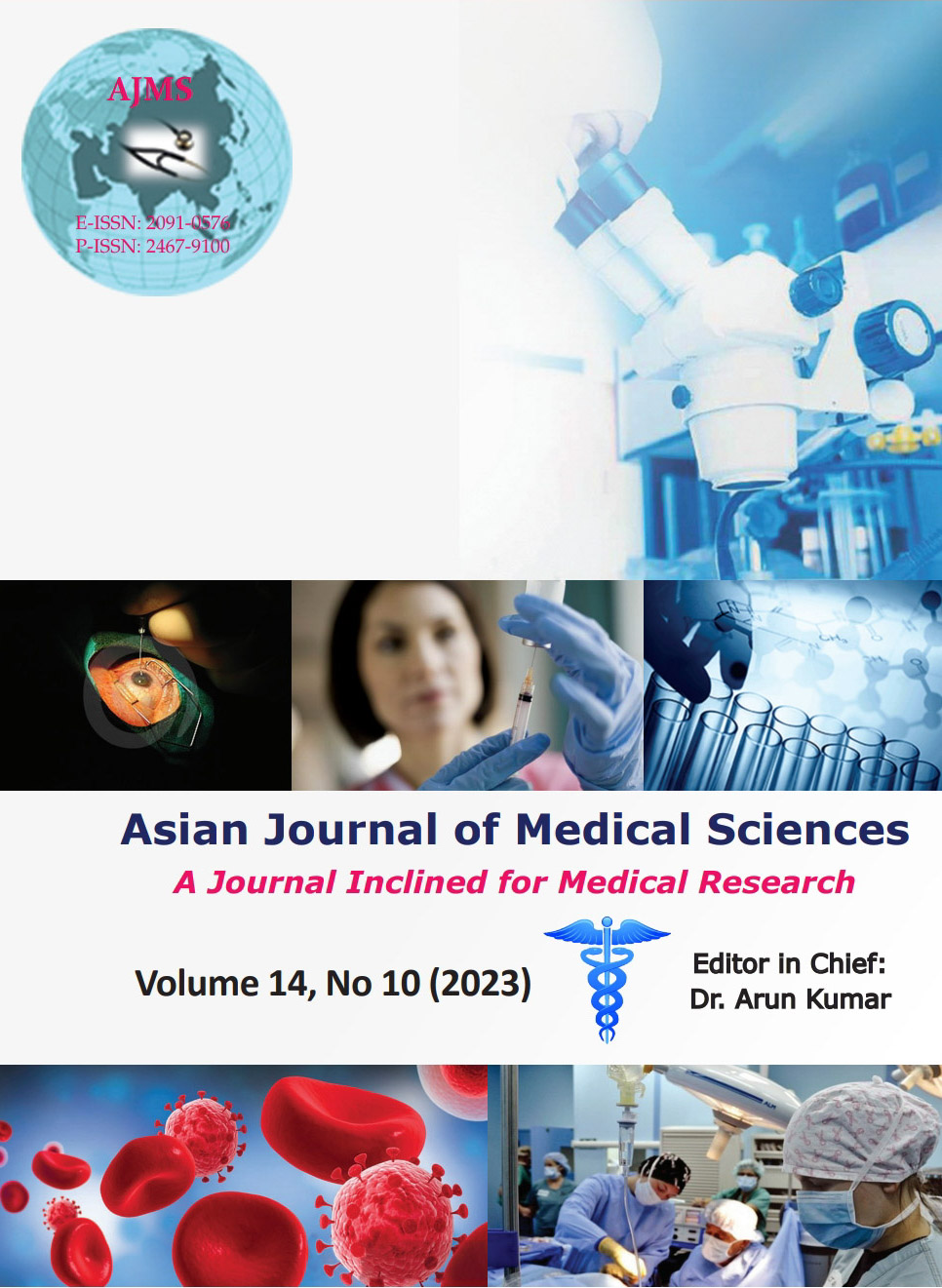A study on clinical, radiological, and cytologic features of lung cancer
Keywords:
Lung cancer; Fine needle aspiration cytology; Adenocarcinoma; Squamous cell carcinoma; Radiology; Papanicolaou staining; Giemsa stainingAbstract
Background: Lung cancer is the most common cancer in the world today and the most common cause of cancer death in developing countries. In clinically suspected cases of lung cancer, if histologic confirmation is not there, cytologic confirmation is suffice. Pulmonary cytology has reached a high level of accuracy in diagnosing various subtypes of lung carcinomas. It must be emphasized that cytological diagnosis of lung cancer is a clinicopathological interpretation and correlation with clinical and radiographic findings is mandatory. The present study was conducted to assess the cytological patterns of lung cancer.
Aims and Objectives: The study was conducted to describe the cytological patterns of lung cancer, to correlate the cytological diagnosis with clinical and radiological findings in lung cancer and also to evaluate the risk factors of lung carcinoma in local settings.
Materials and Methods: Study material was collected in cytology laboratory from the clinically suspected lung carcinoma patients. Using a proforma, a detailed history including smoking habits and other associated risk factors and radiological findings were collected. We used PAP and Giemsa stain for slide preparation. Cytological patterns of the samples were identified. Fifty cytologically diagnosed cases of lung malignancy were included in the study.
Results: 75% of the cytology samples obtained were from the lung lesion through guided fine-needle aspiration (FNA). Next most frequent samples were FOB imprint (19%) smears, followed by FOB wash (3%) smears and FNA from lymph nodes. The most common cytomorphological subtype of lung cancer was adenocarcinoma. Lung cancer showed a peak incidence in the age group of 60–69 years and a male preponderance with male: female ratio 15:1. In the present study, 90.9% of squamous cell carcinoma were centrally located lesions and 58% of adenocarcinoma were peripherally located.
Conclusion: CT-guided FNA can be used as a first-line investigation in cases of lung lesions so that thoracotomy for diagnostic purposes can be avoided.
Downloads
Downloads
Published
How to Cite
Issue
Section
License
Copyright (c) 2023 Asian Journal of Medical Sciences

This work is licensed under a Creative Commons Attribution-NonCommercial 4.0 International License.
Authors who publish with this journal agree to the following terms:
- The journal holds copyright and publishes the work under a Creative Commons CC-BY-NC license that permits use, distribution and reprduction in any medium, provided the original work is properly cited and is not used for commercial purposes. The journal should be recognised as the original publisher of this work.
- Authors are able to enter into separate, additional contractual arrangements for the non-exclusive distribution of the journal's published version of the work (e.g., post it to an institutional repository or publish it in a book), with an acknowledgement of its initial publication in this journal.
- Authors are permitted and encouraged to post their work online (e.g., in institutional repositories or on their website) prior to and during the submission process, as it can lead to productive exchanges, as well as earlier and greater citation of published work (See The Effect of Open Access).




